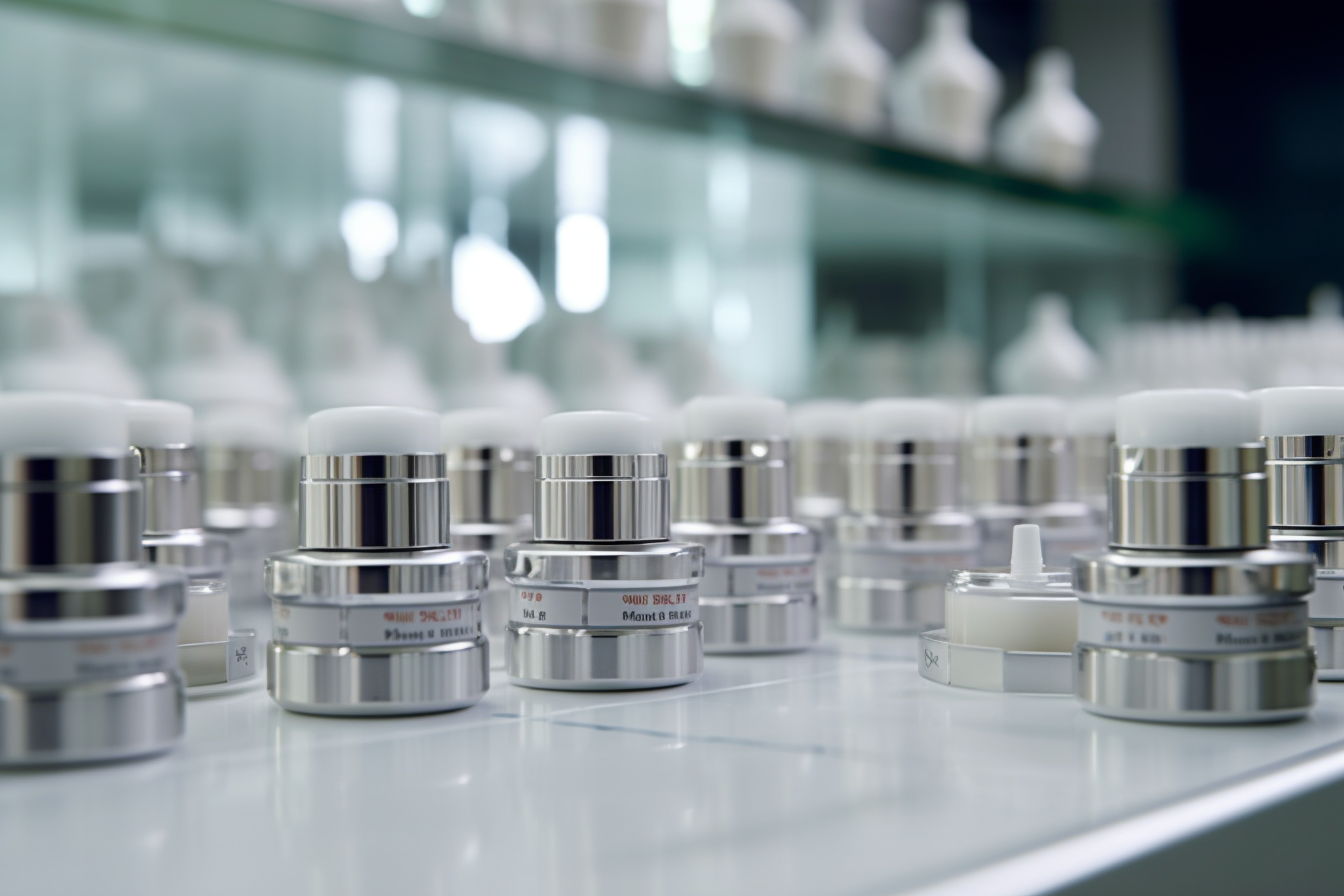In recent years, the cosmetics industry has seen significant growth and innovation. With numerous products hitting the market daily, it’s essential to understand the process behind manufacturing these beauty essentials. The cosmetic manufacturing process involves various stages, from raw material sourcing to product approval. In this article, we’ll delve into each stage in detail.
The Production Process: A Step by Step Guide
To ensure high-quality and safe cosmetics, manufacturers follow a standard production process that includes selecting raw materials, mixing ingredients, using appropriate machinery, and obtaining necessary approvals. Let’s take a closer look at each step.
1. Raw Material Sourcing
The first step in the cosmetic manufacturing process is sourcing the right raw materials. These include natural or synthetic ingredients, such as oils, emollients, surfactants, and preservatives, among others. Manufacturers must carefully select high-quality raw materials to guarantee consistent product performance and safety. They also need to ensure that suppliers meet regulatory requirements and adhere to Good Manufacturing Practices (GMP).
2. Formulation Development
Once the raw materials have been sourced, formulation development begins. This phase entails creating a recipe for the cosmetic product, ensuring its stability, efficacy, and safety. Innovative formulations are crucial for standing out in the competitive cosmetics market, so companies invest heavily in research and development to create unique products that cater to consumer needs and preferences. They also work with a cosmetic manufacturing consultant throughout this process.
- Emulsions: Emulsions consist of oil and water phases mixed with an emulsifying agent. Creams and lotions are common examples of emulsion-based products.
- Anhydrous systems: These formulations do not contain water and are usually oil-based. Examples include lipsticks, balms, and salves.
- Suspensions: Suspensions involve the dispersion of solid particles in a liquid medium. Some face scrubs and body polishes fall under this category.
- Gels: Gels are semi-solid systems that consist of a liquid phase dispersed in a three-dimensional network of polymers. Hair gels and styling products often use gel-based formulations.
3. Mixing and Production
Once the formulation has been finalized, it’s time to mix the ingredients. Mixing methods may vary depending on the product type and required consistency. Advanced machinery and equipment are typically used for mixing processes to ensure precise temperature control, accurate measurements, and uniform blending. The final mixture undergoes various tests to ascertain its quality, stability, and safety before moving on to the next step.
Packaging: Ensuring Product Integrity and Appeal

The packaging stage is critical, as it ensures the product’s integrity, maintains its quality, and also plays an essential role in marketing appeal. Cosmetic containers must be carefully selected to protect the contents from contamination, oxidation, and light exposure. In addition to functionality, manufacturers also consider aesthetics, sustainability, and ease of use when designing packaging.
1. Primary Packaging
Primary packaging refers to the container that directly holds the cosmetic product. Common types of primary packaging materials include glass, plastic, metal, or paperboard. Each material has its advantages and disadvantages, with factors such as cost, durability, and recyclability playing a crucial role in the decision-making process.
2. Secondary Packaging
Secondary packaging involves the outer packaging that protects and supports the primary container. It also serves as an additional marketing tool by displaying product information, branding, and design elements that attract consumers. Boxes, sleeves, and labels are some examples of secondary packaging materials.
What is the Process of Manufacturing OTC Cosmetics?
The otc cosmetic manufacturing process involves several stages. Firstly, raw materials are gathered and tested for quality. Then, these ingredients are mixed according to specific formulations. Next, the mixture is processed to create the desired product. Finally, the cosmetics undergo rigorous testing and quality control measures before being packaged and distributed to the market.
Quality Control and Product Approval
The cosmetic manufacturing process is not complete without rigorous quality control measures and product approval. Manufacturers must comply with strict regulations and guidelines to ensure consumer safety and satisfaction. Here’s a brief overview of the key aspects involved in this process:
1. Quality Control Testing
Throughout the production process, quality control tests are conducted to guarantee consistency and safety. These tests may include physical and chemical analysis, microbial testing, stability studies, and compatibility testing between the formulation and packaging materials.
2. Regulatory Compliance
Cosmetic products must meet the standards set by regulatory agencies, such as the FDA (US), European Commission (EU), or CFDA (China). These organizations have strict requirements regarding ingredient safety, labeling, and claims. Manufacturers must ensure their products comply with these regulations before launching them into the market.
3. Final Product Approval
Once all quality control tests have been passed and regulatory compliance has been confirmed, the final product is approved for sale. This approval signifies that the cosmetic product is safe, effective, and ready to be launched into the market to delight consumers.
In conclusion, the cosmetics manufacturing process is a complex journey involving raw material sourcing, formulation development, mixing, packaging, and quality control to create the beauty products we know and love. Understanding this intricate process helps us appreciate the effort and expertise that goes into developing our favorite cosmetics.
